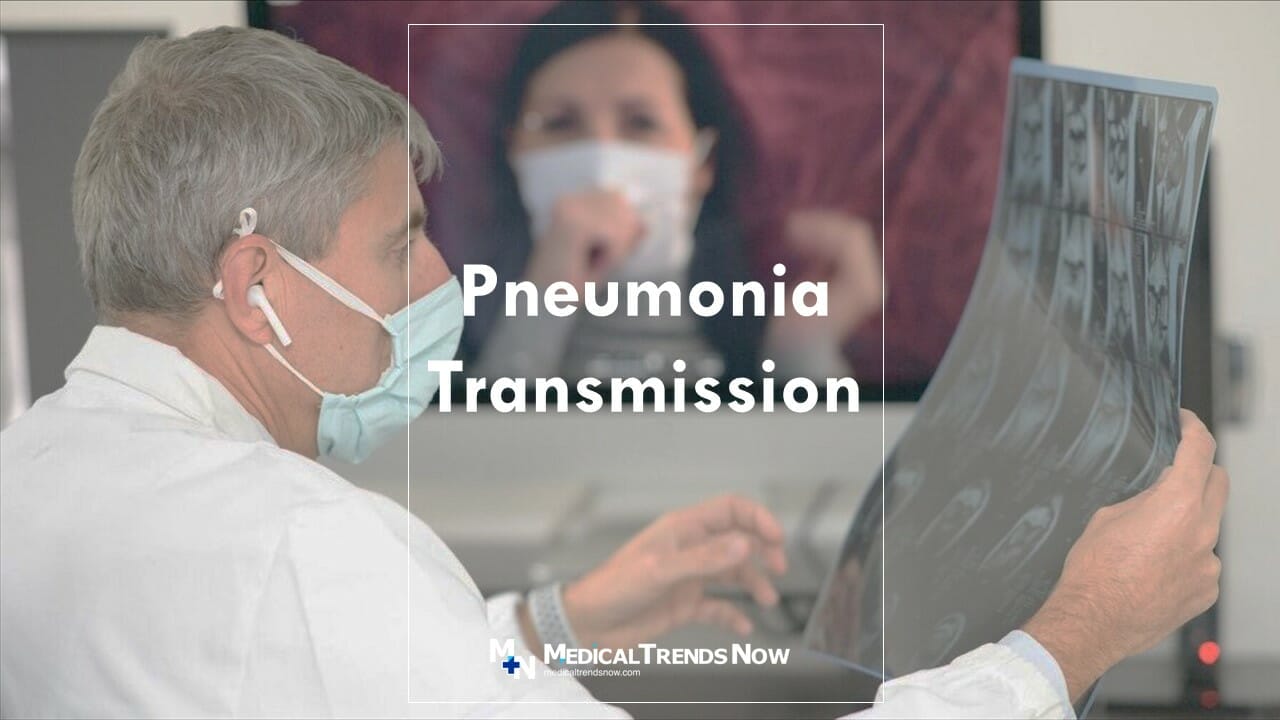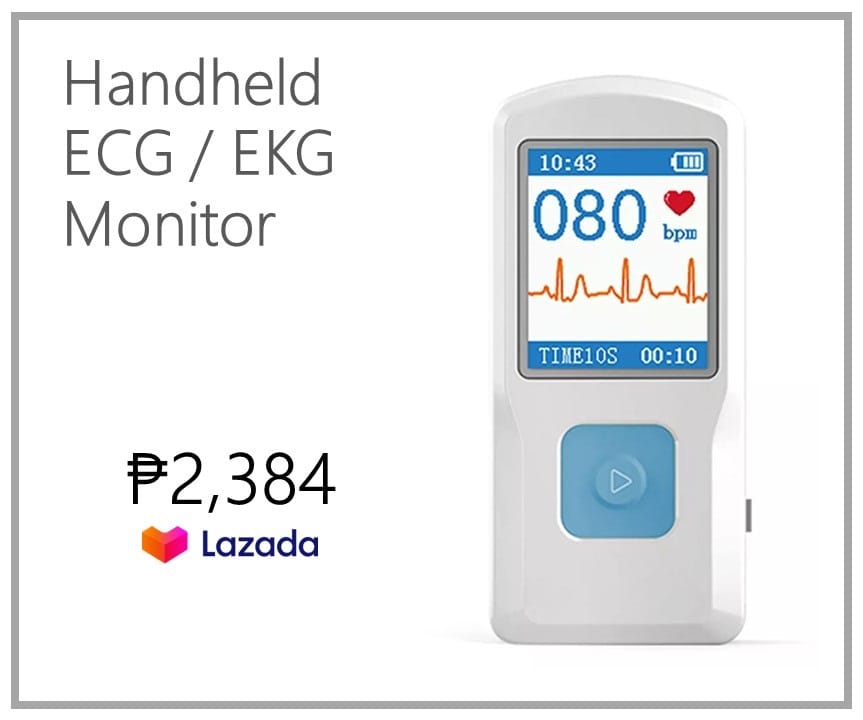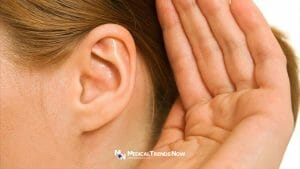Table of Contents
When we think of pneumonia, we often think of it as a disease that primarily affects the elderly. However, anyone can get pneumonia – even young, healthy people. In this article, we will discuss what pneumonia is, how is pneumonia contagious, its causes, and how to avoid it.
Pneumonia is a lung infection that can be life-threatening if left untreated. It is caused by bacteria, viruses, and fungi and is highly contagious, meaning it can spread easily from person to person. Understanding how pneumonia is transmitted is key to preventing its spread and avoiding potential health complications.
What Is Pneumonia?
Pneumonia is an infection of the lungs that most often occurs after a cold or the flu. It is most often caused by bacteria but can also be caused by viruses, fungi, or other organisms.
Pneumonia can occur at any age but is more common in young children and older adults. There are many different types of pneumonia, and the symptoms can vary depending on the type of pneumonia and the person’s age and health. Treatment for pneumonia usually involves antibiotics, rest, and plenty of fluids.

Causes Of Pneumonia
Pneumonia is a serious lung infection that can be life-threatening. It is most commonly caused by bacteria, viruses, or fungi. Pneumonia can also be caused by inhaling irritants, such as smoke or chemicals. Symptoms of pneumonia include coughing, chest pain, shortness of breath, rapid breathing, sweating, and fever. Treatment for pneumonia depends on the cause and severity of the infection. In some cases, antibiotics may be prescribed. Pneumonia can usually be prevented by washing your hands often, avoiding close contact with people who are sick, and getting vaccinated against the flu and pneumococcal disease.
Below this article, we will explore the various ways in which pneumonia can be passed from one person to another so that you can better protect yourself and those around you.
How Is Pneumonia Contagious?
Pneumonia is a serious illness that affects the lungs and can be contagious. In this article, we will explain how pneumonia spreads and what you can do to protect yourself from infection.
Pneumonia is caused by bacteria, viruses, or fungi that spread through air droplets when someone who is infected coughs or sneezes. The airborne particles containing the germs then enter your lungs and make you sick.
Other forms of transmission include contact with contaminated surfaces such as furniture or toys and breathing in contaminated air from close contact with an infected person. It can also be transmitted from mother to baby during pregnancy or birth. If you are with a group of people who have pneumonia, it is possible to catch the infection if you do not take precautions. Here we look at how pneumonia spreads and what you can do to protect yourself from infection.

How is pneumonia transmitted?
Pneumonia is an infection of the lungs. It occurs when bacterial, viral, or other particles enter your lungs and cause an infection. The infection makes the air sacs in your lungs inflamed and swollen, which can make it difficult to breathe. The infection can be spread from person to person; this is known as a contagious disease. Pneumonia can be spread through the airborne particles you breathe in, for example, when you are in close contact with someone who has the infection.
How does pneumonia spread?
Pneumonia is a contagious disease. It can be spread from person to person through the airborne particles you breathe in, for example, when you are in close contact with someone who has the infection. Pneumonia is spread through droplets of water containing the infection. These droplets can be carried in the air when someone coughs, sneezes or talks. The infection can also spread by touching something that has become contaminated with infected water.
Prevention Of Spread
Pneumonia is an infection of the lungs that affects millions of individuals around the world each year. It can be caused by a variety of sources, but it is most commonly spread through inhaling airborne droplets from an infected person’s cough or sneeze.
Taking precautions to prevent the spread of pneumonia is essential for protecting ourselves and others from disease.
The primary way people become infected with pneumonia is through contact with someone else who has it. This means that avoiding close contact with others who are sick, washing hands frequently, and covering one’s mouth when coughing or sneezing can help stop transmission.
Additionally, if you are diagnosed with pneumonia, taking care to stay home and rest until symptoms have subsided will also help to minimize spreading it to other individuals.
Treating pneumonia is the best way to protect yourself from developing complications. Although there are many different types of pneumonia, the symptoms are usually similar. The most common symptom of pneumonia is a cough that may be dry or moist, with or without phlegm (sputum).

Other Ways To Protect Yourself
Pneumonia is a contagious disease that can be spread through contact with an infected person or their saliva. It’s important to take precautions such as washing hands regularly and avoiding close contact with those who are sick in order to protect yourself from this illness. However, there are other steps you can take to reduce your risk of getting pneumonia.
One way to protect yourself from pneumonia is by getting vaccinated. Vaccines like the pneumococcal vaccine help prevent certain types of bacterial infections, including pneumonia. Additionally, it’s important to maintain a healthy lifestyle by eating nutritious meals, getting regular exercise, and managing stress levels. Doing so will help boost your immune system and reduce your chance of contracting the disease.
Finally, try not to smoke or be around others who do since smoking can weaken the body’s natural defense mechanisms which would make you more susceptible to illnesses like pneumonia.

What Are The Types Of Pneumonia?
Pneumonia is a serious lung infection that can be life-threatening. There are different types of pneumonia, and the type you have may affect your treatment.
Viral pneumonia is a serious lung infection that can be caused by a number of different viruses. The most common viruses that cause viral pneumonia are the influenza virus, the respiratory syncytial virus (RSV), and the adenovirus.
The symptoms of viral pneumonia are similar to the flu, including:
- Fever
- Chills
- Coughing
- Shortness of breath
- Rapid breathing
- And chest pain.
Viral pneumonia can be dangerous, especially for young children, the elderly, and people with chronic health conditions. If you think you or someone you know may have viral pneumonia, it is important to see a doctor right away.
Bacterial pneumonia is a serious lung infection that occurs when bacteria invade the lungs.
The symptoms of bacterial pneumonia include:
- Coughing
- Chest pain
- Shortness of breath
- And fever.
Bacterial pneumonia can be treated with antibiotics, but it can be deadly if not treated promptly. Early diagnosis and treatment are essential for patients with bacterial pneumonia.
Mycoplasma pneumonia is a type of bacterial pneumonia. It is caused by Mycoplasma pneumoniae, a small bacterium that lacks a cell wall. This bacterium is spread through respiratory secretions, such as saliva, mucus, or cough droplets.
You may experience symptoms that include:
- Fever
- Coughing
- And shortness of breath.
The disease can range from mild to severe, and it is more common in children and young adults. Treatment for mycoplasma pneumonia typically includes antibiotics and rest.
Hospital-acquired pneumonia (HAP) is a type of lung infection that occurs after a person has been hospitalized for another illness or injury. HAP often occurs in people who are already very ill and may be at risk for other types of infections. In some cases, HAP can be life-threatening.
HAP is caused by bacteria, viruses, or fungi that enter the lungs through the nose or mouth. These microorganisms can come from the hospital environment, such as contaminated equipment or surfaces, or from other patients who are infected. People with HAP often have a weakened immune system and may be unable to fight off these microorganisms.
Symptoms of HAP include:
- Coughing
- Shortness of breath
- Chest pain
- Fever
- Chills
- And sweating.
These symptoms usually develop two to three days after a person is hospitalized.
Community-acquired pneumonia (CAP) is a type of lung infection that is acquired outside of a hospital setting. CAP can occur in people of all ages but is most common in young children and older adults.
Symptoms of CAP can range from mild to severe and include coughing, chest pain, shortness of breath, rapid breathing, sweating, and fever. In some cases, CAP can lead to serious complications, such as respiratory failure or death. Early diagnosis and treatment are critical for the best possible outcome.
Walking pneumonia is a term used to describe a less severe form of pneumonia. This type of pneumonia is usually caused by a bacteria or virus and can often be treated at home with rest and plenty of fluids.
While walking pneumonia is not as serious as other forms of pneumonia, it can still be dangerous for young children, the elderly, or those with weakened immune systems. If you or someone you know is showing signs of walking pneumonia, it’s important to see a doctor right away.
Fungal pneumonia is a type of pneumonia caused by a fungus. It can occur in people of any age but is most common in young children and older adults.
Symptoms of fungal pneumonia include:
- coughing
- chest pain
- shortness of breath
- and fever.
Treatment typically involves antifungal medications.
Fungal pneumonia is a relatively rare form of pneumonia, accounting for only 2-3% of all cases. However, it can be more severe than other types of pneumonia and often requires hospitalization. In some cases, fungal pneumonia can be fatal. Early diagnosis and treatment are essential for the best possible outcome.
What Are The Risk Factors For Pneumonia?
Pneumonia is a serious lung infection that can be life-threatening. The risk of developing pneumonia increases with age, and people with certain medical conditions are more susceptible to the disease. There are several risk factors for pneumonia, including:
Weakened immune system
People with HIV/AIDS, cancer, or diabetes are at increased risk for pneumonia because their weakened immune systems make it difficult to fight off infection.
Chronic lung disease
People with chronic obstructive pulmonary disease (COPD) or other chronic lung diseases are more likely to develop pneumonia.
Smoking
Cigarette smoking damages the lungs and makes them more susceptible to infection.
Exposure to chemicals or toxins
Workers who are exposed to chemicals or toxins, such as asbestos, are at increased risk for developing pneumonia.

Who Is At Risk Of Getting Pneumonia?
Pneumonia is a serious infection of the lungs that can be deadly. It is most often caused by bacteria but can also be caused by viruses, fungi, and parasites. Anyone can get pneumonia, but some people are at greater risk than others.
People who are at increased risk for pneumonia include infants and young children; older adults; people with chronic medical conditions such as asthma, COPD, diabetes, heart disease, or sickle cell disease; smokers; and people with weakened immune systems due to HIV/AIDS or cancer.
Pneumonia is more common in the winter months, so it’s important to take precautions to protect yourself from getting sick. Wash your hands regularly and thoroughly, avoid close contact with people who are sick and clean surfaces that may be contaminated with germs.
If you or someone you know has these symptoms, it is important to see a doctor right away. Bacterial pneumonia can be life-threatening if not treated properly.

What Are The Tests To Diagnose Pneumonia?
There are several different tests that can be performed in order to diagnose pneumonia. The most common test is a chest x-ray, which can help to identify the location and severity of the infection. A CT scan may also be ordered if the pneumonia is suspected to be caused by a specific type of bacteria. Blood tests may also be ordered to check for the presence of white blood cells, which can indicate an infection. In some cases, a sputum culture may also be performed in order to identify the specific type of bacteria causing pneumonia.

How Can You Avoid Getting Pneumonia?
Pneumonia is a serious lung infection that can be life-threatening. It is important to know the causes of pneumonia and how to avoid them.
Pneumonia is caused by bacteria, viruses, or fungi. These organisms can enter the lungs through the nose or mouth and cause an infection. The most common way to get pneumonia is by inhaling infected droplets from a cough or sneeze. You can also get pneumonia by touching something that has these infectious droplets on it and then touching your face.
There are several things you can do to avoid getting pneumonia:
- Wash your hands often with soap and water, especially before you eat.
- Avoid close contact with people who are sick.
- And getting vaccinated against the flu and pneumococcal disease.
- If you are sick, stay home from work or school to avoid spreading the illness.

Treatment for Pneumonia
Pneumonia is a serious lung infection that can be caused by a number of different things, including bacteria, viruses, and fungi. It can be mild or severe, and it can sometimes lead to death. Treatment for pneumonia depends on the cause and the severity of the infection.
Bacterial pneumonia is the most common type of pneumonia, and it can be treated with antibiotics. Viral pneumonia is less common, but it can still be severe. Treatment for viral pneumonia typically involves rest, plenty of fluids, and pain relievers. Fungal pneumonia is the least common type of pneumonia, but it can be very serious. It is usually treated with antifungal medications.
Pneumonia is a serious lung infection that often requires hospitalization.
The mainstay of treatment for pneumonia is antibiotics, which are given to patients through an IV. In some cases, patients may also require supplemental oxygen or mechanical ventilation. Although pneumonia can be deadly, most patients recover with proper treatment.

Is There A Home Remedy For Pneumonia?
Although pneumonia is a serious lung infection, there are some home remedies that can help ease symptoms and speed up the recovery process.
One of the best home remedies for pneumonia is rest. When the body is fighting off an infection, it needs all the energy it can get. Getting plenty of rest will help the body to heal more quickly.
Another home remedy for pneumonia is to drink lots of fluids. This helps to prevent dehydration and also thin out mucus so that it can be coughed up more easily. Hot beverages like tea or soup can be especially helpful in loosening mucus.
Finally, it’s important to keep your lungs clear by coughing up any mucus that you can.

When To Visit A Doctor For Pneumonia?
It is important to know when to visit a doctor for pneumonia. There are several symptoms of pneumonia, including coughing, chest pain, shortness of breath, sweating, and fever. If you experience any of these symptoms, it is important to see a doctor right away. Pneumonia can be caused by bacteria, viruses, or fungi. It is important to get treatment for pneumonia as soon as possible to avoid serious complications.
Which Doctor Can Treat Pneumonia?
It is important to see a doctor if you think you have pneumonia. But which type of doctor should you see?
There are three types of doctors who can treat pneumonia: primary care physicians, pulmonary specialists, and infectious disease specialists. Primary care physicians are the most common type of doctor that people see for this condition. They can diagnose and treat pneumonia, but they may refer you to a specialist if your case is severe.
Pulmonary specialists are doctors who specialize in treating lung conditions. They can provide more specialized care for pneumonia patients. Infectious disease specialists are experts in treating infections, including pneumonia. They may be consulted if your case is particularly difficult to treat.
Conclusion: How is Pneumonia Contagious
In conclusion, pneumonia is a serious lung infection that can be deadly. Anyone can get pneumonia, but some people are at higher risk, such as young children, the elderly, and people with weak immune systems. There are many different causes of pneumonia, but the most common are viruses. The best way to avoid getting pneumonia is to get vaccinated and to practice good hygiene.
Sources: How is Pneumonia Contagious
- Is pneumonia contagious? – NHS
- Pneumonia: Causes, Symptoms, Diagnosis & Treatment – Cleaveland Clinic
- Pneumonia (for Parents) – Nemours KidsHealth
- What Causes Pneumonia? | American Lung Association
- Pneumonia – Symptoms and causes – Mayo Clinic
- How to Protect Yourself From Contagious Types of Pneumonia – Health
- Is Pneumonia Contagious? What to Know, and How to Protect Yourself – Rutgers Institute for Translational Medicine and Science
- Is pneumonia contagious? – Walgreens
- Is pneumonia contagious? Pneumonia Basics: Causes, Symptoms and When to Seek Treatment – Methodist Health System
- Community-Acquired Pneumonia in Adults – Cedars-Sinai
- How is Pneumonia Contagious – CDC
- Is Pneumonia Contagious? | Texas Med Clinic
- How Long Is Pneumonia Contagious? – MedicineNet
- Viral vs. Bacterial Pneumonia: Understanding the Difference – Pfizer
- How Contagious Is Pneumonia? – Children’s Minnesota
- Mycoplasma pneumoniae Causes and How It Spreads – CDC
- Community-Acquired Pneumonia in Adults – Cedars-Sinai
- Bacterial Pneumonia – StatPearls – NCBI Bookshelf
- Hands are vehicles for transmission of Streptococcus pneumoniae in novel controlled human infection study – European Respiratory Society
- Community-Acquired Pneumonia – Lung and Airway Disorders – MSD Manuals
- Pneumococcal Disease Transmission: Information for Clinicians – CDC
Disclaimer: How is Pneumonia Contagious
This website is intended to educate both members of the general public and those working in the medical field on the prevalence, causes, and methods for preventing, diagnosing, and treating diseases that affect people throughout their lives. This website’s content is provided solely for informational reasons and is not meant to serve as a substitute for the advice of a qualified medical practitioner.













